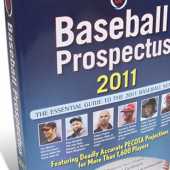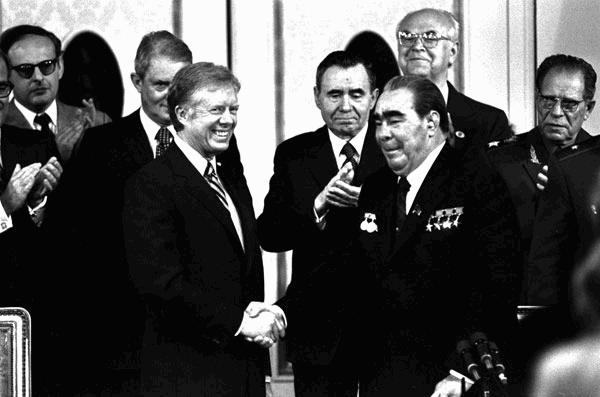Geiger Counter Readings in Seattle, WA on January 3, 2012
Geiger Counter Readings in Seattle, WA on January 3, 2012
Ambient office = .089 microsieverts per hour
Ambient outside = .078 microsieverts per hour
Soil exposed to rain = .071 microsieverts per hour
Red onion from grocery store = .108 microsieverts per hour
Tap water = .112 microsieverts per hour
Filtered water = .086 microsieverts per hour
Nulcear Treaties - 9 - New START
In 2008, right after the election of Barack Obama as President of the U.S., the Russian President Medvedev announced that the Russian Federation would deploy new sort-range missiles on their western border as a counter to the announced intention of the U.S. to place anti-ballistic missiles in Poland and the Czech Republic on the Russian border. The Bush administration claimed that the new missiles were being deployed to counter Iranian missiles The Russian President stated that any negotiations on a new Strategic Arms Reduction Treaty to replace the original which was going to expire at the end of 2009 would have to be legally binding with lower maximums on nuclear warheads and their delivery vehicles.
In early 2009, the Russian President said that the Russian Federation was going to start a major rearmament project including upgrading their nuclear arsenal. He said that since NATO was moving aggressively in Eastern Europe, the Russian Federation would increase their army, navel and nuclear capabilities as a response and that they would begin in 2011.
In May of 2009, the U.S. and the Russians began working on a new start agreement and agreed to abide by the terms of the original Strategic Arms Reduction Treaty (START I) after it expired in December of 2009 until a new treaty was signed. The new treaty would reduce the number of warheads they deployed to under one thousand five hundred each.
In July of 2009, U.S. President Obama and Russian Federation President Medvedev signed the “Joint understanding for a follow-on agreement to START I in Moscow, Russia. The agreement requires that each side reduce its warheads to between one thousand five hundred and one thousand six hundred seventy five. The delivery systems were to be reduced to between five hundred and one thousand one hundred. This was only an interim agreement and the intention was to see a new treaty negotiated and signed before December of 2009 when START I expired.
Despite the intent to replace START I before it expired in December of 2009, negotiations dragged on into 2010. Finally in April of 2010, the successor to START I, Measures to Further Reduction and Limitation of Strategic Offensive Arms was signed by U.S. President Obama and Russian President Medvedev. It replaced the proposed START II treaty which was signed but never implemented and the unfinished negotiations for a START III treaty. The treaty was ratified and entered into force in February 2011. Each side will have seven years to comply and the treaty will remain in force until 2021.
New START requires that deployed warheads on both sides be reduced by 50%. This would be around one thousand five hundred. Total intercontinental missiles launchers, submarine missiles launchers and heavy bombers could not exceed eight hundred with only seven hundred of those being deployed. Stockpiled warheads are not covered by the treaty and each side still has thousands of inactive warheads in storage. A new inspection system with eighteen inspections per year will be developed to verify compliance. (There was a report from the U.S. State Department in 2009 that the Russians were not in full compliance with the previous START I treaty.)
Signing of New START:
Nuclear Treaties - 8 - Comprehensive Test Ban Treaty
Following the use of atomic bombs on Japan, the U.S. was soon joined by other nations in developing and testing nuclear weapons. Over five hundred nuclear devices were exploded in atmospheric and ground tests in the decade after the end of World War II. The world became concerned about the health effects of the fallout from all the tests. The Prime minister of India called for the elimination of all nuclear weapons worldwide in 1953. However, the Cold War between the U.S., Russia and Red China made progress on nuclear disarmament very difficult.
Almost another decade passed before the Partial Test Ban Treaty was drafted and signed in 1963. It banned nuclear tests in the atmosphere, underwater or in space but did not ban underground testing which could still result in the release of radioactive materials. France and China did not sign this Treaty.
After further negotiation, the Nuclear Non-Proliferation Treaty was signed in 1968. Nations that did not have nuclear weapons agreed not to manufacture, purchase or otherwise obtain them. All nations who signed the treaty whether or not they had nuclear weapons agreed to work towards nuclear disarmament. India, Pakistan and Israel did not sign this treaty.
During the next two decades, the world remained in the grip of the Cold War with the United States, the United Kingdom, and France against the Soviets and the Chinese. Pakistan and India developed their nuclear arsenals as did Israel. Finally with the end of the Cold War on the dissolution of the Soviet Union in 1991, the situation improved for nuclear disarmament. In 1993, under the auspices of the United Nations, the signatories of the Partial Test Ban Treaty began discussing the possibility of expanding the original Treaty to cover a ban on all nuclear weapons testing.
Despite three years of hard debate on the proposed treaty, the negotiators could not reach a consensus. The text resulting from the negotiations was submitted to the United Nations General Assembly as a draft resolution in 1996. In September of that year, more than two thirds of the U.N. General Assembly voted in favor of what was called the Comprehensive Nuclear-Test Ban Treaty. Since the U.N. vote, only India, Pakistan and North Korea have carried out nuclear tests.
The United States has signed the Comprehensive Nuclear-Test Ban Treaty but it has not been ratified by Congress. Ratification will ultimately depend on the U.S. maintaining nuclear laboratories and a reliable nuclear weapons inventory as well as monitoring capability to verify compliance by other states. The U.S. also reserves the right to begin testing again after withdrawing from the Treaty if it proves impossible to maintain a reliable nuclear arsenal without testing.
Despite fail of all signatory nations to ratify the Treaty, they refrain from testing and monitor the environment constantly for signs of any nuclear testing by any state. The debate over ratification in the U.S. and other nations continue.
Annex 2 refers to a list of 44 countries which participated in the original treaty negotiations:
Nulcear Treaties - 7 - Strategic Arms Reduction Treaty I
During the early 1980s, the United States and the Soviet Union entered into a series of talks about strategic arms reduction. Although the U.S. President Reagan had repeatedly accused the Soviets of violating the terms of the SALT II treaty, he was still willing to propose a reduction in all warheads at Geneva in 1982. The discussions that followed were originally referred to as SALT III but ultimately came to be called the Strategic Arms Reduction Talks or START I. IN the first phase, Reagan called a limit of all warheads on missiles to five thousand and a limit of warheads on ICBMs of two thousand five hundred. Only eight hundred and fifty ICBMs would be allowed per side and a limit of about one hundred of the heaviest class of ICBMS. In the second phase, there would be negotiations on the number of warheads carried by heavy bombers.
At the time, the U.S. had a clear advantage in long range bombers which could reach Russia although the Soviet air space was well defended and the targets spread over the huge territory of the Soviet Union. The Soviet fleet of bomber were unable to reach the U.S. for the most part and were mainly intended for conflicts in Europe and Asia. The Soviets had a clear advantage in heavy ICBM so by starting with ICBM reduction, the U.S. would benefit more than the Soviets from the first phase of Reagan’s proposal.
In 1983, Reagan announced the U.S. Strategic Defense Initiative (SDI) which was a shift of U.S. policy from the mutually assured destruction (MAD) of the prior decades when it was assumed that it was not possible to win a nuclear war with the Soviets and that if either side started one, both sides would be totally destroyed. The SDI was intended to shift U.S. policy to defending the U.S. against a nuclear attack from the Soviet Union with land and space based defense systems. This shift in U.S. policy alarmed the Soviets because they realized that if the U.S. could possibly stage a first strike against the Soviet Union and withstand a retaliatory strike from the Soviets. The Soviets withdrew from negotiations during the mid 1980s and the strategic arms race accelerated. Although SDI was viewed by many experts as being an impossible plan, billions of dollars were squandered on it in the 1980s.
By the beginning of the 1990s, as a result of the nuclear arms race of the 1980s, both sides had more than ten thousand nuclear warheads. The START I treaty was signed in 1991 by the U.S. President Bush and the Soviet Premier Gorbachev to halt the increase in warheads. There were also limits set for fighter aircraft, tanks, artillery pieces and attack helicopters. The U.S. destroyed three hundred and sixty five B-52 bombers to comply with the treaty. When the Soviet Union broke up in 1991, the Russians inherited the Soviet nuclear arsenal and the Treaty. Other countries that had been part of the Soviet Union sent their nuclear weapons to Russia and signed the Nuclear Non-Proliferation Treaty to become nuclear free countries. When the SALT I treaty expired in 2009, the U.S. State Department reported that the Russians were not in compliance with the terms of the Treaty but gave no specific details of violations.
Signing of the START I in 1991 from U.S. State Department:
Nuclear Treaties - 6 - Intermediate-Range Nuclear Forces Treaty
The NATO forces in Western Europe had enjoyed clear military dominance over the Soviet Union up to the late 1970s. The U.S. and other NATO forces bombers and missiles were clearly superior to the old Soviet missiles and bombers. The Soviets moved to balance the NATO arsenal by development and deployment of a new more power generation of mid-range nuclear missiles called SS-20 and Tu22M.
NATO countered with deployment of new nuclear cruise missiles and Pershing ballistic missiles. They also sought negotiations with the Soviet over the build-up of nuclear weapons in Europe. These discussions had begun in Geneva, Switzerland in 1980.
During the first half of the 1980s, there was a chilling of the relationship between the United States and the Soviet Union with U.S. President Reagan repeatedly accusing the Soviets of violating the provisions of the SALT II Treaty which had been signed by both sides but never ratified in the U.S. Congress. In 1981, the U.S. had suggested the complete elimination of all intermediate range nuclear weapons on both sides. There was a disagreement over the inclusion or exclusion of British and French nuclear weapons and the Soviets withdrew from the negotiations in 1983. In 1984, the U.S. began deployment of intermediate nuclear weapons in Europe despite public protests.
Negotiations began again in 1986 with a Soviet proposal to eliminate all nuclear weapons in the world, including those in Europe by 2000. The U.S. declined this offer and instead counter-offered a staged reduction of intermediate range nuclear weapons to zero by 1989. The British and French arsenals were not part of the discussions. Discussions continued in Reykjavik, Iceland between U.S. President Reagan and Soviet Premier Gorbachev over nuclear disarmament. The final text of the treaty that was hammered out was influenced by the decision of the West German Chancellor to remove U.S. nuclear weapons from Germany.
The Treaty Between the United States of America and the Union of Soviet Socialist Republics on the Elimination of Their Intermediate-Range and Shorter-Range Missiles was signed in Washington, D.C. in December of 1987. The Treaty set a deadline of 1991 and by that time, thousands of intermediate range nuclear weapons had been removed and destroyed from the European theater. Both sides were able to inspect the military installations of the other side.
The Soviet Union dissolved in 1991 and the Russian Federation inherited their nuclear arsenal. The Russian Federation abided by the Treaty that the Soviets had signed until 2007. In that year, The RF President Putin stated that he had decided that it was no longer in the interest of the RF to adhere to the INF Treaty. The Russians were concerned about U.S. plans to deploy missiles in Poland and the Czech Republic that would be aimed at Russia. They said that their decision to continue with the INF or to withdraw from it would be strongly influenced by the U.S: deployment of the planned missiles in Eastern Europe. Ultimately the U.S. dropped the plans for Polish and Czech missile deployment.
Signing of the Intermediate-Range Nuclear Forces Treaty from a U.S. Stated Department:
Nuclear Treaties - 5 - Strategic Arms Limitation Treaty II
Following the success of the first round of the Strategic Arms Limitation Talks (SALT) with the Interim Agreement between the United States and the Soviet Union, a second round of Strategic Arms Limitation Talks was carried out between 1972 and 1979. In the Salt I agreement, the U.S. and the Soviets agreed to freeze the combined number of intercontinental ballistic missiles (ICBMs) and submarine launched ballistic missiles (SLBMs) at the number they possessed in 1972 when the Interim Agreement was signed for a period of five years.
The SALT II goal was to limit the total number of all categories of delivery vehicles on either side to only two thousand two hundred and fifty. This would include missile warheads launched from either land based facilities or submarines as well as bombs dropped by aircraft. The proposed SALT II treaty also required that both sides not develop any new missiles. The intention to ultimate reduce nuclear arsenals was also part of the conversation. Major provisions of the Interim Agreement were to be carried forward into the new agreement which was to last until 1985.
The two sides disagreed on many particulars of a possible agreement. The old problem of U.S. presence in Europe and Soviet mid-range weapons aimed at Europe was a major sticking point in the discussions. A first draft of a possible agreement called the Vladivostok accord was made in 1975 where many of the points of dissention were ironed out. However, disagreement about U.S. cruise missiles and a new generation of Soviet bombers called Backfire were still a major problem.
At the start of the Carter Administration in 1977, a thorough review was made of the SALT II progress. Calls for additional reductions in nuclear weapons were added to the previous proposals and an offer to defer the cruise/Backfire problems to a third series of talks. The Soviets refused both of these new proposals by the U.S.
Eventually an agreement was reached that included several sections. The first part was a short term (3 year) agreement on cruise missiles, mobile ICBMs, and ICBM reductions. A framework was established for future negotiation. And, the Vladivostok accord was to be integrated into the final Treaty.
In mid-1979, U.S. President Carter and Soviet Premier Brezhnev signed the Treaty but the U.S. Congress refused to ratify the agreement. Neither leader was able to obtain the changes that Congress was demanding. Senator Joe Biden, now Vice President of the United States, managed to obtain the changes that were required.
Six months after the Treaty was signed but before it had been ratified by the U.S. Congress, the Soviet Union invaded Afghanistan. It was also made public that there was a Soviet combat brigade stationed in Cuba. These actions and revelations angered the U.S. government and people so much that the Treaty was never formally ratified. However, in 1982, U.S. President said that he would abide by the SALT II terms even without ratification. The Soviet Premier agreed that he too would abide by SALT II. Reagan later accused the Soviets of deviating from the SALT II provisions but pledged that the U.S. would continue to follow the SALT II framework.
SALT II signing photo from U.S. State Department:
Links for January 7, 2013
Helicopters have been conducting radiation tests above portions of the Washington, D.C. area using remote gamma radiation sensing technology. washington.cbslocal.com
NASA’s is turning astronaut trash into radiation-shielding Frisbees. gizmodo.com
Thousands of protestors were held by police today as they attempted to surround the site of six planned reactors. world-nuclear-news.org
Links for January 6, 2013
A mayor of a town in Fukushima, Japan delivered an address to the U.N. about the accident. youtube.com
Filmmakers produce a documentary on the Women of Fukushima. women-of-fukushima.com
Iranian officials tell citizens to vacate city located near nuke site. radiationnews.blogspot.com
Links for January 5, 2013
Will Japan pass a new law to force Japanese stores to sell produce from Fukushima? enenews.com
Radioactive cesium was found in 25 of 26 food samples from Fukushima prefecture. pubs.acs.org
Radioactive waste dumped into rivers during decontamination work in Fukushima. ajw.asahi.com
City official in Japan tells a starving man to go to work at Fukushima Daiichi. enenews.com
John Sickels Assigns the MinorLeagueBall.com Mariners Grades
Over at The Mother Ship, the ever-knowledgable Gordon Gross has already provided his annotations to the grades assigned by prospect guru John Sickels to the Mariners system, so this is just my addendum.
There's not a ton to quibble about at the top, as Gordon notes. Sickels points to all of the exact reasons for pause that we here are probably familar with (Taijuan Walker struggling a bit at AA, Danny Hultzen struggling a lot at AAA, Nick Franklin's various issues, etc.), but without ingoring the upside either.
I can't blame him for being skeptical of relievers in general, but I do think that Carter Capps and Stephen Pryor have shown enough to prove they will have MLB value above the B-/C+. That being said, he deserves credit for putting Carson Smith right behind them, and giving Smith his due props for his High Desert and Arizona Fall League performances.
It's always interesting to see which guys get plucked out of the grab-bag for the middle areas.
Glad to see:
- Acknowlegement of Anthony Fernandez (very glad to see that)
- Recognition of Gabriel Guerrero and Julio Morban as separating themselves out of the international pack
- Tyler Pike rising
Intrigued by:
- National love for Patrick Kivlehan, who has a looooong way to go (not that I'm not rooting for him)
- A high ranking for John Hicks, whose numbers are not nearly as interesting to me as Marcus Littlewood's (despite my pro-UVa bias)
Disappointed by:
- Lack of love for our man Ji-Man Choi (yes, he gets an "others" mention)
- Not even a mention for Stephen Landazuri, who ran statistical rings around Jordan Shipers, and was a year younger. [Edit: I guess I should mention that Shipers was a "young" 21 (late June birthday), so Landazuri is not actually a full year younger. But he is younger.]
But, on the whole, there's not much to complain about. My ratings will be a bit different, of course, but I can't say that he's way off base about anything.





